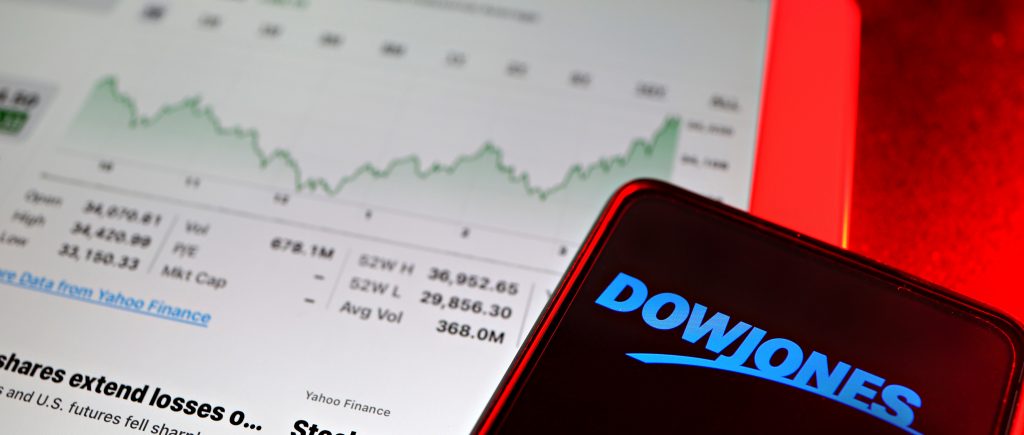Dow Jones Dips as Fed Rate Cut Bets Rise: A Balancing Act
The Dow Jones Industrial Average retreated on Tuesday, reversing Monday’s gains as US Treasury yields climbed. This downward trajectory was primarily driven by growing expectations of a potential Federal Reserve rate cut in November.
Dow Jones’s recent decline reflects the delicate balancing act between economic growth and inflation. While a potential rate cut could provide a short-term boost, long-term market performance will hinge on the Fed’s ability to navigate a complex economic landscape and maintain stability.
A Complex Economic Picture
The US economy presents a complex picture, with conflicting signals emerging from recent economic data. On one hand, the decline in job openings to a three-and-a-half-year low suggests potential labor market easing, which could alleviate inflationary pressures. This, in turn, could prompt the Federal Reserve to adopt a more accommodative monetary policy.
However, a surge in consumer confidence to its highest level since March 2021 paints a different picture. This increased optimism could fuel consumer spending, potentially reigniting inflationary concerns. The Fed’s challenge lies in balancing these opposing forces and determining the appropriate course of action.
Market Movers and Shakers
Boeing (BA): The aerospace giant was a standout performer, leading the Dow’s gains after a successful share sale, raising over $21 billion to bolster its balance sheet.
Chevron (CVX), Coca-Cola (KO), and Home Depot (HD): These stocks lagged behind, contributing to the broader market’s decline. Their performance was likely influenced by a combination of factors, including concerns about global economic growth, rising interest rates, and potential shifts in consumer spending patterns.
The Dow Jones Outlook: A Tightrope Walk
The Dow Jones’s recent consolidation below the 42,350 level highlights the market’s indecision. A break below the October 25 swing low of 42,043 could signal further downside, potentially testing the 42,000 mark and the 50-day Simple Moving Average (SMA). However, a bullish breakout above the October 25 peak of 42,596 could open the door to a move towards 43,000 and potentially a new all-time high.
The market’s direction will largely depend on the Fed’s policy decisions, the trajectory of interest rates, and the overall economic outlook. Investors should closely monitor these factors to make informed investment decisions. As the earnings season unfolds and geopolitical tensions persist, volatility is likely to remain a defining feature of the market.

 Noor Trends News, Technical Analysis, Educational Tools and Recommendations
Noor Trends News, Technical Analysis, Educational Tools and Recommendations




